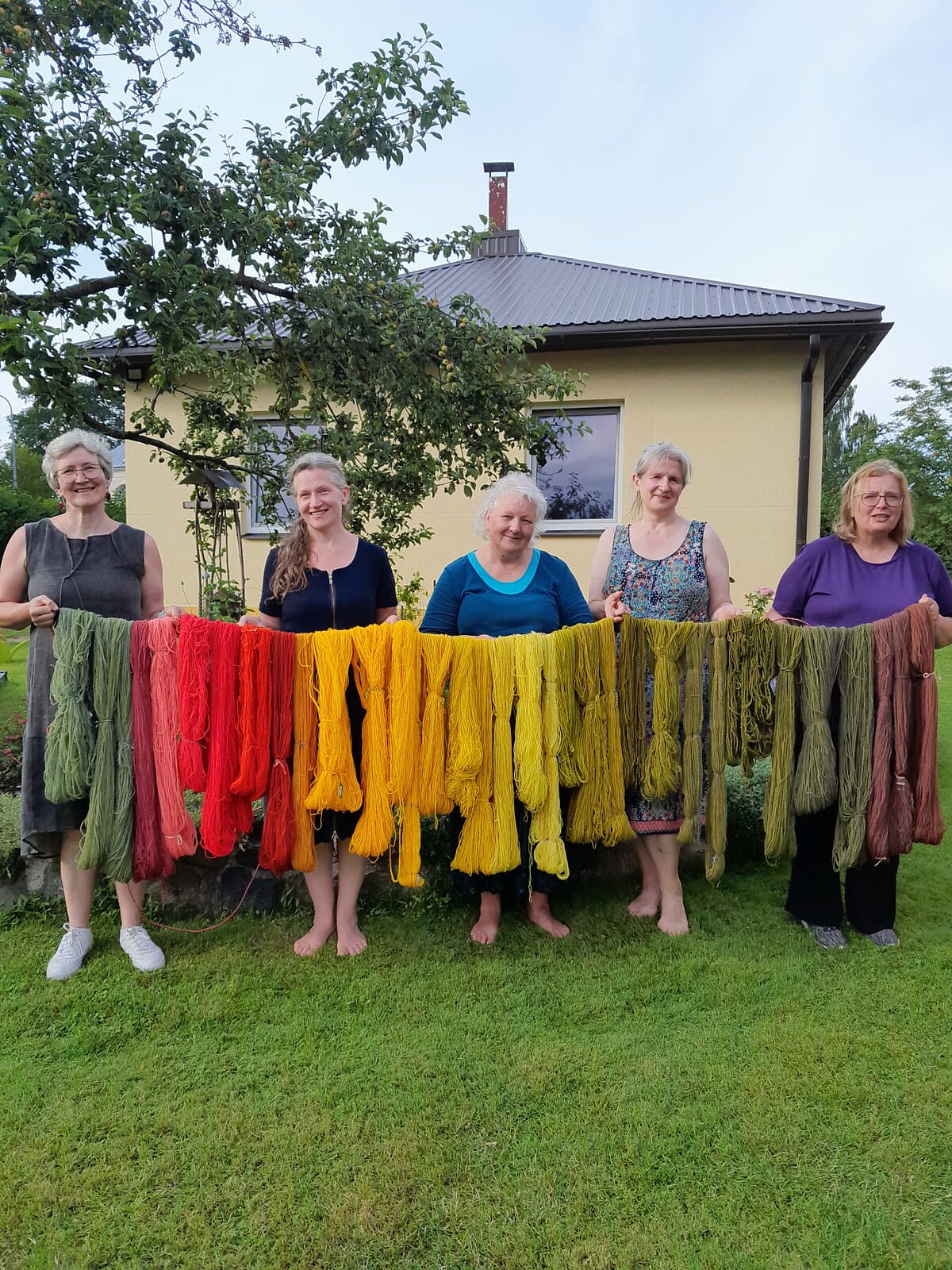
Within the framework of the project “Internal and External Consolidation of the University of Latvia” (5.2.1.1.i.0/2/24/I/CFLA/007) grant “Dye and Dyeing: from Tradition to Industry” (LU-BA-ZG-2024/1-0007), a public natural dye workshop was held on July 19 and 20, 2025, led by Dr. hist. Anete Karlsone, Senior Researcher at the Institute of Latvian History, Faculty of Humanities, University of Latvia. The goal of the workshop was to test in practice several ancient textile dyeing technologies recorded in historical sources.
To compare the methods used in the past in the professional dyeing environment and the traditional dyeing practice of peasants, the experiments used both the recipe created by the master of the French royal dyeing manufactories, Paul Gout, for obtaining a color tone that was very relevant in the fashion world at that time – scarlet red – and the information found in the ethnographic material of the Baltic Sea region about the use of local nature for dyeing textiles. A novelty in dye research is the article published in 2025 in the journal Heritage (SCOPUS Q2) by Estonian researcher Liisa Luhamaa and her colleagues, which is based on Estonian ethnographic material about the use of a very archaic method of bark fermentation to obtain reddish tones. Latvian ethnographic material was also utilized, including information from the 1893 newspaper “Dienas Lapa” on the use of plants in dyeing, as well as records from ethnographic expeditions conducted by the Monuments Board between 1924 and 1943.
As a result of the dyeing workshop, yarns in bright and saturated shades were obtained, confirming the vast possibilities of using ancient dyeing techniques today. The dyed yarns will be used in the activities of the element “Making of Latvian Traditional Belts and Belt-like Fabrics” included in the List of Intangible Cultural Heritage of Latvia.

 CONFERENCE
CONFERENCE